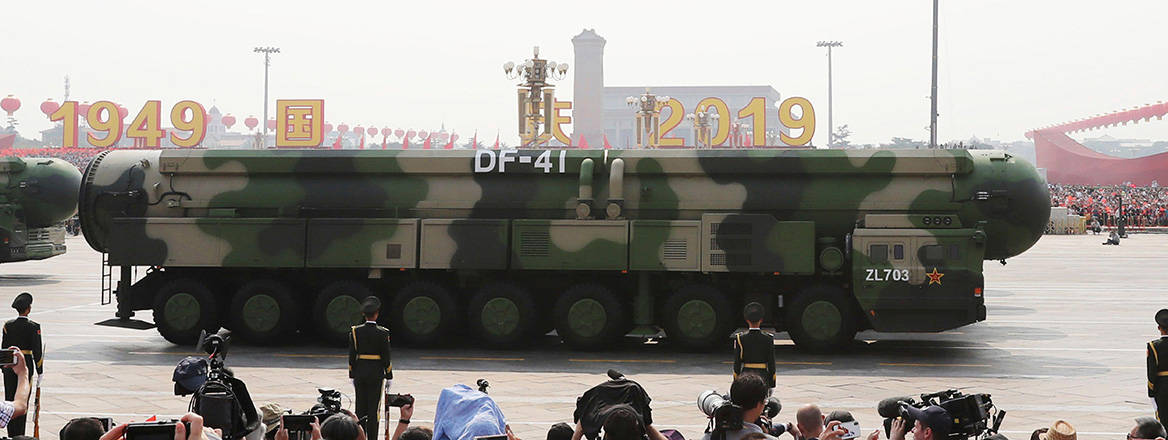Dr Sari Arho Havrén

China officially became the world’s fifth nuclear weapon-possessing state in 1964 and was then recognised under the Nuclear Non-Proliferation Treaty (NPT). For decades, China carefully advanced its nuclear arsenal to maintain its minimum deterrent strategy. However, in recent years, China has clearly abandoned this strategy, heavily increasing its count of nuclear weapons and becoming the world’s third-largest nuclear weapons power. The Pentagon has estimated that if the current trajectory continues, China could field approximately 1,500 warheads by 2035.
In August 2023, at the NPT Review Conference, the Director-General of the Department of Arms Control of the Foreign Ministry of China, Sun Xiaobo, reaffirmed China’s 1964 policy ‘not to be the first to use nuclear weapons at any time and under any circumstances’ and ‘not to threaten to use nuclear weapons against non-nuclear-weapon states’.
Nonetheless, a month later, China’s proposal for global governance seems to have dropped this decades-old policy. Up until August 2023, China had repeatedly reaffirmed its No First Use policy from 1964 onwards, although on some occasions Beijing has stretched it to exclude other nuclear powers, especially the US. The dual pledges of No First Use and No Threatening to Use nuclear weapons have long been cornerstones of China’s nuclear strategy. The fact that China’s proposal on global governance omits these commitments – while otherwise expressing China’s positions in a detailed manner – could indicate a change in China’s position on nuclear weapons, especially because China has never previously wavered or appeared ambiguous about these commitments.
China’s ultimate aim in its 1964 policy on the use of nuclear arms was ‘to deter others from using or threatening to use’ nuclear weapons against China. Could dropping this from an important policy document simply be a mistake, or is this a deliberate new shift in policy, perhaps based on Xi Jinping’s analyses of ‘changes not seen in a hundred years’, or influenced by Russia’s threatening rhetoric directed at NATO allies regarding nuclear weapons?
While China’s proposal for global governance demands that the international community oppose the threat or use of nuclear weapons, China appears to have excluded its unilateral pledge to do so. Beyond this, China’s tacit support for Russia in its invasion of Ukraine has cemented talking points on ‘invisible security’ and how countries’ national security should not threaten that of others. China sees this as the root cause of the war in Ukraine. In Beijing’s view, ‘the crisis’ – China still refuses to call the war anything else – stems from a flawed, unbalanced European security architecture, where other parties' security concerns are ignored. In this context, multiple Chinese researchers have sided with Russia. Furthermore, following Finland’s NATO accession, a number of Chinese researchers took the view that since Russia could not match NATO’s conventional deterrence, Russia had no other option but to increase its nuclear arsenal.
The consequences of China abandoning its No First Use/No Threatening to Use policy are minor at most; China has in any case refused to engage in any arms-control dialogue with the US. Thus, its policy promises have often been taken with a grain of salt. Nevertheless, two immediate implications of China’s potential new approach still come to mind. First, China’s quick nuclear build-up means that the US will face two nuclear-armed powers, China and Russia, working together as its adversaries. Second, China may have learned from Moscow’s capitalisation on European fear regarding Russian nuclear weapons in order to, at a minimum, delay help for Ukraine. Similarly, triggering fear by threatening the use of nuclear weapons could rein in Japan’s and other US allies’ willingness to defend Taiwan, if the People’s Liberation Army tries to take the island by force.
No comments:
Post a Comment